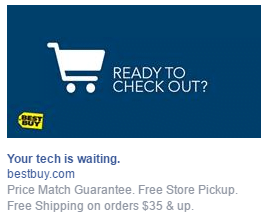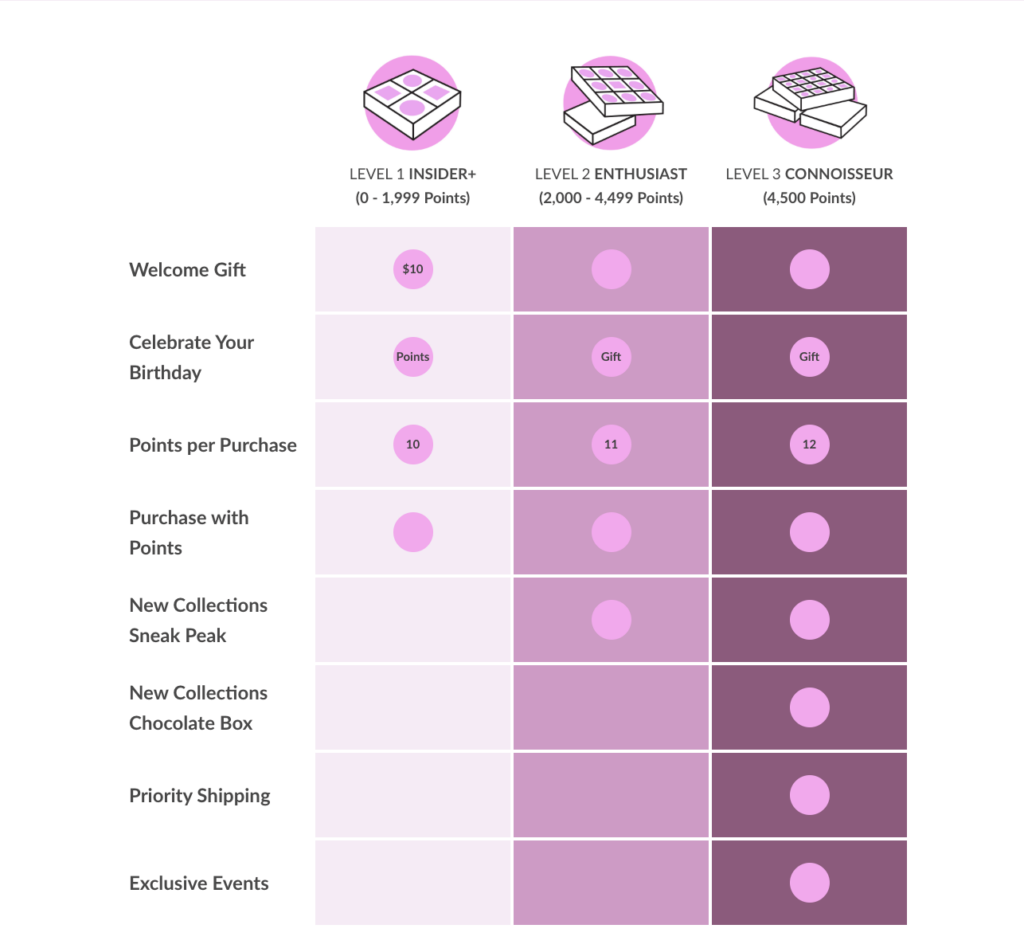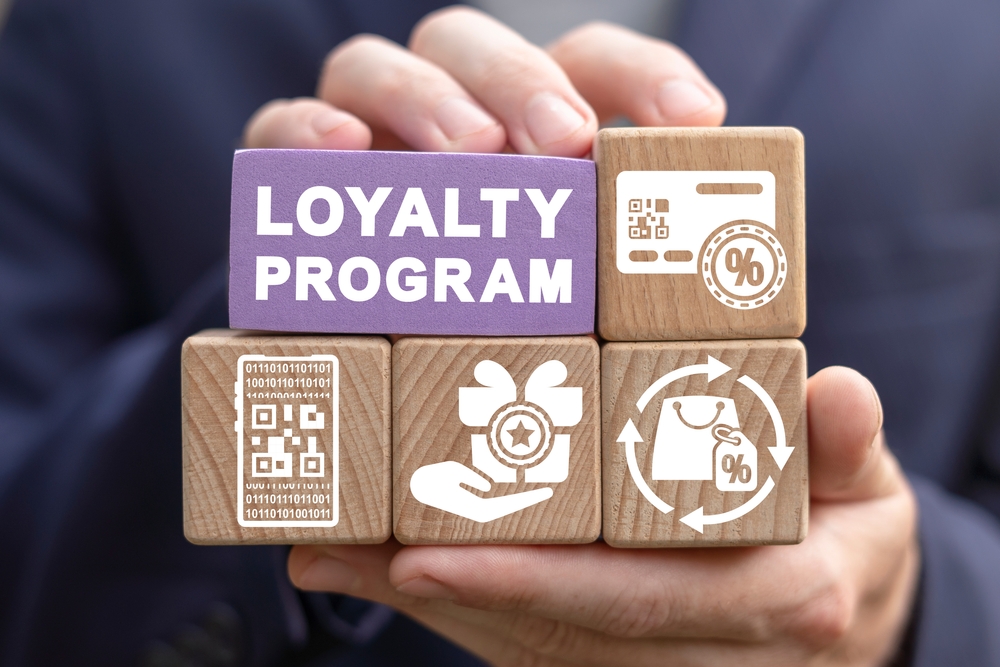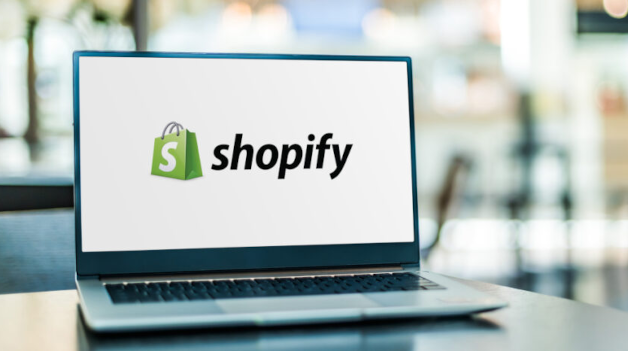There are many ways to lower digital customer acquisition costs, but here are 10 effective strategies you can use in 2023:
- Use targeted advertising to reach potential customers who are more likely to be interested in your products or services. This can help you avoid wasting money on ads that aren’t relevant to your audience.
- Optimize your website for search engines (known as SEO) so that it appears at the top of search results for relevant keywords. This will increase the likelihood that potential customers will find your site when they are searching for products or services like yours. And best of all, you pay nothing for this traffic!
- Offer discounts or other incentives to customers who refer their friends or family members to your business. Often overlooked, this strategy can help you acquire new customers at a minimal cost and it build tons of good will.
- Use social media to promote your business and engage with potential customers. Social media can be an effective way to reach a large audience at a low cost. Especially if you go viral!
- Invest in content marketing to attract potential customers to your site from the top of the funnel and build trust and credibility with them. This can help you acquire new customers at a lower cost compared to more traditional forms of advertising.
- Use retargeting to show ads to people who have visited your site but haven’t made a purchase. This can help you remind them of your business and encourage them to come back and make a purchase. It is one of the fastest ways to increase revenue too.
- Create a loyalty program to reward customers for their repeat business. This can help you retain existing customers and reduce your customer acquisition costs over time.
- Conduct A/B testing (called CRO – Conversion Rate Optimization) to determine which versions of your ads and landing pages are most effective at converting potential customers into actual buyers. This can help you fine-tune your marketing efforts and reduce your customer acquisition costs.
- Partner with other businesses to cross-promote each other’s products or services. This can help you reach a wider audience at a lower cost. You can get results fast, by leveraging existing vendor and distributor relationships you already have.
- Focus on providing exceptional customer service to turn first-time customers into repeat customers and watch their CLTV (Customer Life Time Value). This added trust and confidence in your company can help you reduce your customer acquisition costs over time by encouraging customers to come back and buy from where they’ve already had a positive experience.

Table of Contents
What is targeted advertising for an e-commerce business?
Targeted advertising is a form of advertising that uses data and analytics to show ads to specific groups of people who are more likely to be interested in the products or services being advertised.
In the case of an e-commerce business, targeted advertising can be used to show ads to potential customers who have previously expressed interest in similar products or who have visited the e-commerce business’s website in the past.
In addition, the leading paid ads platforms like Meta, Google, TikTok, & Linkedin all have audience targeting capabilities that allow you to manually select your target customers. But with the rollout of IOS 14, these platforms’ ability to identify and track individual user identities has been greatly diminished.
We have found that leveraging your existing customer lists to create custom audiences yields very high ROAS in paid campaigns. Lookalike audiences built off these customer lists has lost some of its effectiveness due to the IOS 14 privacy issue mentioned above.
We recommend testing each of these targeting methods, as they can help the business acquire new customers at a lower cost by only showing ads to people who are more likely to be interested in their products.
How does SEO help lower digital customer acquisition costs?
SEO, or search engine optimization, is the process of improving the visibility and ranking of a website in search engine results. By optimizing a website for search engines, a business can increase the likelihood that its website will appear at the top of search results for relevant keywords.
This can help the business acquire new customers at a lower cost because potential customers are more likely to find the business when they are searching for products or services like the ones offered by the business.
The real key here is user intent. Unlike running paid ads on Meta or another social platform, the user has a need and is searching for a solution right now.
In the old days, you focussed on trying to get your page ranked in the top 10 results on page 1. However today, Google’s search results page has more than 10 different types of results that can be displayed on that 1st page.
Now your content can show up at the top of the page for things like image results, video results, Q&A results, organic product listings (e-commerce) and more rich snippet types.
People look at SEO as the holy grail, since generating revenue from this channel can reduce your reliance on paid advertising over time. There’s no better way to reduce customer acquisition cost than by reducing the amount you spend on paid ads.
How can e-commerce brands best leverage social media to lower customer acquisition costs?
E-commerce brands can use social media to lower customer acquisition costs in several ways, including the following:
- Use social media to promote the brand and its products or services to a large audience for free, or if you consider the social media manager’s time, then at least at a low cost. This can help attract potential customers who may not have heard of the brand before.
- Engage with potential customers on social media by responding to comments and messages and sharing interesting content that is relevant to the brand and its products. This can help build trust and credibility with potential customers, leading to sales.
- Target potential customers who are more likely to be interested in the brand’s products or services. This can help the brand acquire new customers at a lower cost than more traditional forms of advertising. It’s like billboard advertising, brand awareness.
- Collect customer feedback and reviews, which can help the brand improve its products and services and provide a better customer experience. This can help the brand retain existing customers and reduce customer acquisition costs over time.
- Use social media to stay up-to-date with industry trends and developments, which can help the brand stay ahead of the competition and attract new customers. Younger audiences love the TikTok songs, voices and dances. Having your brand create content using those tactics is a great way for additional visibility.
- Create a community of loyal customers who support and promote the brand. This can help the brand acquire new customers through word-of-mouth and reduce its reliance on paid advertising. The more they share and talk about your brand, the more it will move the revenue needle.
What are great ways to make a referral program for an e-commerce business?
Here are some ways to create a successful referral program for an e-commerce business:
- Offer a reward or incentive that is valuable to customers. This could be a discount on their next purchase, a cash reward, or a free product or service.
- Make it easy for customers to refer others to the business. This could involve providing referral links or sharing buttons that customers can use to easily share information about the business with their friends and family.
- Track referrals and rewards accurately to ensure that customers are properly rewarded for their referrals.
- Promote the referral program to customers through email newsletters, social media posts, and other marketing channels.
- Make sure the referral program is easy to understand and that customers know exactly how to participate and how to redeem their rewards.
- Consider offering additional rewards or incentives to customers who refer a large number of people to the business. This can help increase participation in the referral program.
- Be transparent about the terms and conditions of the referral program to build trust and credibility with customers.
- Monitor the success of the referral program and make adjustments as needed to improve its effectiveness.
How can e-commerce websites use retargeting to lower acquisition costs?
Retargeting is a form of online advertising that involves showing ads to people who have visited an e-commerce website in the past but have not made a purchase. This can help the website acquire new customers at a lower cost by reminding potential customers of the website and encouraging them to come back and make a purchase. It consistently leads to very high ROI and is a tactic employed by all leading e-commerce brands.
Here are some ways e-commerce websites can use retargeting to lower acquisition costs:
- Show ads to people who have visited the website but haven’t made a purchase. This can help remind them of the website and encourage them to come back and make a purchase. This can be setup to used at the site-wide level, category/collection level, product page level, and cart level.
- Use retargeting to show ads for specific products or services that the person has shown interest in on the website. This can help the website target its ads more effectively and increase the likelihood that the person will make a purchase.
- Use retargeting to show ads to people who have abandoned their shopping cart on the website. This can help the website recover lost sales and acquire new customers at a lower cost. This is the 1st remarketing tactic to turn on to see sales grow immediately.
- Show ads to people who have made a purchase on the website in the past. This can help the website upsell additional products or services and encourage repeat purchases.
- Use retargeting in combination with other marketing tactics, such as email marketing and social media advertising, to create a more comprehensive and effective marketing strategy. This can help the website acquire new customers at a lower cost.
You’ll notice that most of these strategies utilize visitor journey data points in order to trigger the email being sent, SMS being sent, retargeting ad to be shown, etc.
Luckily the market is full of mature marketing automation solutions that collect the user journey touch points on the website, and provide pre-built marketing automations which segment visitors based on the objective of each campaign.
A few leading SAAS tools for e-commerce sites include: Klaviyo, Hubspot, Keap, Listrak, ActiveCampaign and Mailchimp

How can e-commerce brands leverage content marketing?
Content marketing is a strategy that involves creating and sharing valuable, relevant, and consistent content to attract and retain a clearly defined audience with the goal of driving profitable customer action.
Most e-commerce brands strive to have an integrated content marketing strategy, where the same content is shared across different channels at the same time, maximizing sales for that targeting theme.
This usually requires a shared content calendar, where all marketing teams can plan and execute their promotions in unison, no matter if their content is shared on social channels, the website blog, with 3rd party social influencers, as press releases, and so on.
More specifically, e-commerce brands can leverage content marketing in several ways, including the following:
- Attract potential customers to the brand’s website by creating and sharing interesting, informative, and engaging content that is relevant to the brand and its products. This could include blog posts, videos, infographics, and other types of content.
- Use content marketing to build trust and credibility with potential customers by providing valuable information and answering common questions about the brand and its products. This can help the brand stand out from its competitors and convince potential customers to make a purchase.
- Retain existing customers by providing them with valuable, relevant, and engaging content that keeps them coming back to the brand’s website. This could include email newsletters, social media posts, and other forms of content.
- Drive profitable customer action by including calls to action in the content that encourage potential customers to take a specific action, such as making a purchase or signing up for a newsletter.
- Use content marketing to improve the brand’s search engine rankings by creating high-quality content that is optimized for relevant keywords. This can help the brand’s website appear at the top of search results, which can help the brand acquire new customers at a lower cost.
- Build a community of loyal customers who support and promote the brand. This can help the brand acquire new customers through word-of-mouth and reduce its reliance on paid advertising.
What makes a great loyalty program for e-commerce companies?
Loyalty programs were super hot when they first hit the scene. Even though the hype has cooled, a great loyalty program for e-commerce companies is a necessity today, and should have several key features:
- It should offer rewards or incentives that are valuable to customers. This could be discounts on future purchases, exclusive access to products or services, or other perks that customers will appreciate.
- It should be easy for customers to earn rewards and redeem them. This could involve providing clear instructions on how to participate in the loyalty program and how to redeem rewards, as well as making it easy for customers to track their rewards and progress.
- It should be flexible and customizable. This means that customers should be able to choose how they want to earn rewards and how they want to redeem them. For example, they should be able to earn rewards through different types of activities, such as making purchases, referring friends, or engaging with the brand on social media.
- It should be transparent and fair. This means that customers should know exactly what they need to do to earn rewards and how much each reward is worth. The loyalty program should also be clear about any restrictions or exclusions that apply.
- It should provide value to both the e-commerce company and its customers. This means that the loyalty program should help the company retain existing customers and acquire new customers, while also providing value and benefits to customers who participate in the program.
Keep in mind that a loyal customer is a happy customer. And happy customers talk to their friends about brands they like. This leads to very cheap customer acquisition costs.

What are good ways to A/B test e-commerce product pages to lower acquisition costs?
A/B testing, also known as split testing, is a method of comparing two versions of a product page to determine which one is more effective at converting potential customers into actual customers. In the e-commerce space, A/B testing is part of an overall CRO (Conversion Rate Optimization) effort to increase the conversion rate site-wide, which dramatically increases the # of new customers acquired, at a very low cost.
This one tactic has the highest leverage on reducing acquisition costs and here are some ways e-commerce companies can use A/B testing to improve their product pages and lower acquisition costs:
- Test different versions of the product page to see which one performs better. This could involve testing different headlines, images, descriptions, or call-to-action buttons to see which version is more effective at converting potential customers.
- Use A/B testing to determine the optimal placement of elements on the product page. For example, the company could test different versions of the page to see which one has the highest conversion rate when the call-to-action button is placed in different locations.
- Compare the performance of different versions of the product page on different devices. This can help the company determine which version is most effective on desktop computers, smartphones, or tablets.
- Use A/B testing to compare the performance of the product page with and without certain elements, such as customer reviews or trust badges. This can help the company determine which elements are most effective at increasing conversions.
- Continuously improve the performance of the product page over time. This can help the company identify and fix any issues that are preventing potential customers from making a purchase.
While your imagination can run wild thinking of different things to A/B test, experience has proven that a comprehensive testing strategy should first be put in place, prior to running any tests.
There are also a number of SAAS tools that can be used for A/B testing. Most popular ones are very inexpensive, provide an easy to use graphical interface to make changes to the pages being tested, and provide the statistical analysis in an easy to read format for marketers. We recommend Optimizely, Visual Website Optimizer, and Google Optimize 360.
For more mature e-commerce brands doing >$10M in revenue, server-side testing platforms provide more robust solutions. These solutions allow for almost unlimited custom tests, based on visitor buying history, journey clicks, or almost any other user segment where the data is available. The clear leader in this space is Sitespect.
How can e-commerce brands partner with other businesses to cross-promote?
E-commerce brands can partner with other businesses to cross-promote each other’s products or services in several ways, including the following:
- Identify businesses that offer complementary products or services and reach out to them about potential partnerships. For example, an e-commerce clothing brand could partner with a jewelry brand to offer customers a discount on both products when they are purchased together.
- Create joint promotions or discounts that are only available to customers who purchase from both businesses. This can help increase sales for both businesses and attract new customers.
- Collaborate on content marketing efforts. For example, the businesses could create a joint blog post or social media campaign to promote each other’s products or services.
- Share each other’s content on social media or email newsletters to reach a wider audience. This can help both businesses increase their visibility and attract new customers.
- Cross-promote each other’s products or services on each other’s websites. This could involve displaying banner ads, links, or other promotional materials on each other’s sites.
While these cross-promotions may be time consuming to establish, once they are in place, they are usually good to go for years to come.
Tracking acquisition costs for this traffic segment is very straight forward and the further out into the future the sales come in, the lower the cost of acquisition becomes.

Reducing digital customer acquisition costs through excellent customer service.
As a consumer, we all know the pain of a bad customer service experience. Email-only support, overseas agents who don’t understand the nuance of customer questions, having to be transferred to managers for any decisions to be approved. These are all simple of examples of what NOT to do.
If we flip the script and are determined to Provide excellent customer service, e-commerce companies can reduce customer acquisition costs in several ways:
- Help retain existing customers and reduce the need for the company to acquire new customers. When customers are happy with the service they receive, they are more likely to continue doing business with the company and to recommend it to others.
- Excellent customer service can help the company generate positive word-of-mouth and increase the likelihood that customers will refer their friends and family to the company. This can help the company acquire new customers at a lower cost than more traditional forms of advertising.
- Customer service can improve the company’s reputation and brand image, which can help attract new customers who are looking for a company they can trust.
- It can help the company resolve issues quickly and efficiently, which can prevent potential customers from becoming dissatisfied and leaving the company. This can help the company retain existing customers and reduce customer acquisition costs.
- Excellent customer service can help the company gather valuable feedback and insights from customers, which can be used to improve the company’s products, services, and overall customer experience. This can help the company retain existing customers and reduce customer acquisition costs over time.
Bonus Section – How Does Attribution Affect Acquisition Costs?
We spent a lot of time discussing tactics & strategies to reduce an e-commerce store’s acquisition costs. But which acquisition channels have the most leverage to lower actual costs the fastest?
In today’s world, paid ads still produce the highest percentage of revenue vs. other non-paid digital channels. The problem with paid channels is attribution.
Each channel uses a different attribution window to take credit for a sale. Facebook uses a 7 day view throughs, Google uses last click in most cases, retargeting tools like Adroll or Criteo us their own attribution rules. Email marketing tools use their rules.
At the end of the day a marketing manager can find the total costs of paid ads, but has enormous difficulty attributing which channel, or better yet, which ad inside that channel provided the highest return.
Being able to determine which paid channels perform the best can lead to a reduction in costs to acquire customers from that channel.
To get there, we can’t rely on Google Analytics or Adobe Analytics. We need to use a tool whose core capability is to track visitors across all sessions, all devices, all while avoiding the IOS privacy tracking restrictions.
Luckily there have been several tools that have hit the market in 2022 that address this need. They use sophisticated user identification techniques along with server-side tracking to be able to capture the most user interaction data possible.
With this data in hand, managers are now able to decide how they want sales to be attributed to each channel. This allows them to see a clearer picture of how money was spent and how it resulted in sales.
In most cases, this new ‘source of truth’ is used to increase ad spend on campaigns that are actually producing the highest ROAS and at the same time, reduce spend on campaigns that producing the lowest ROAS.
By utilizing this data, the cost to acquire customers on these paid channels can be brought down dramatically, and quickly.
We have worked with several leading attribution vendors, the top recommended ones are:
Hyros – Easily integrates with all major e-commerce platforms
Northbeam – Can work on multiple platforms
Triple Whale – Only works with Shopify
(Disclosure: We may earn a commission if you sign up for services we link to in this article.)
Need Help Lowering Your Customer Acquisition Costs?
If you are having difficulty lowering acquisition costs for your brand, we can help.
Learn more about our Acquisition.Stack product by watching our 5 minute video here.
You can always just contact us here and we’ll get back to you asap.








